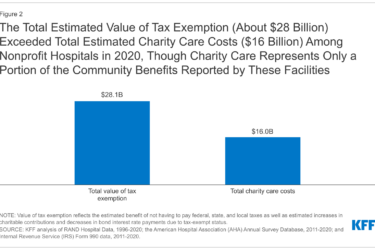 Even for those of us who cover the Affordable Care Act (ACA) more or less full time, July 22 was a pretty zany day. Here’s a recap and some resources to help you going forward.
Even for those of us who cover the Affordable Care Act (ACA) more or less full time, July 22 was a pretty zany day. Here’s a recap and some resources to help you going forward.
First an appeals court in Washington, D.C., ruled, 2-1 that people can’t continue to get subsidies in the federal exchanges – just on the state exchanges. Only it didn’t move to enforce that ruling – which would cut off millions receiving subsidies – because the three judges on that panel knew they didn’t necessarily have the last word. There are more legal fights to come in the case, known as Halbig v. Burwell. (It was v. Sebelius but the name was updated.)
Then, less than three hours later, another appeals court – also a panel of three judges – in Richmond, Va., issued the exact opposite ruling. They said, 3-0, that the subsidies in the federal exchange were fine. Well, maybe not fine – they thought the law was ambiguous. But even with the ambiguity, they said that the IRS had the right to interpret the law to allow the subsidies in the federal exchange. That case is known as King v. Burwell. (The IRS set the rules for the subsidies, which take the form of premium tax credits.)
The question in very simple terms is this: Did the ACA allow the subsidies through the federal exchanges? The plaintiffs argue no – and cite a specific section of the law that refers to subsidies for people enrolled “through an Exchange established by the State.” They say it’s clear as day – the subsidies are tied to state exchanges. The administration and its supporters say that’s far too narrow and literal an interpretation. The whole law is designed to expand coverage and the federal exchanges are meant to stand in when the states don’t stand up exchanges.
Now what?
More legal wrangling.
The Obama administration immediately said it would seek an en banc review – meaning the full appeals court, not just those three judges, would consider the D.C. case. The court isn’t obligated to grant that. If not, the administration could go to the Supreme Court.
The plaintiffs in the Virginia case didn’t (at least not as I write) say what they’d do next. They could accept the loss, seek en banc in that appeals court, or go to the Supreme Court.
AND there are two more cases like this pending, one in Indiana and one in Oklahoma. Rulings aren’t imminent though.
Ultimately , expect that will it get to the Supreme Court in some shape or form. Probably. And if the splits in the lower courts remain, it’s likely the Supreme Court will decide it must weigh in.
If the lower courts end up agreeing , there’s still a pretty decent chance that someone on the losing end in one of the case will petition the Supreme Court. But without a split, the court is less likely to take it.
But, you may ask, didn’t the court already rule on Obamacare? Yes ,indeed. In June 2012, it upheld the constitutionality of the individual mandate and the overall legislation (although it made Medicaid optional for states). But that did not address the same legal questions that are presented in Halbig and the related cases
In case you think this is really no big deal, that the Supreme Court could have killed Obamacare last time around if it wanted to – let me quote one wonderful sentence from my friend and colleague David Nather: “The conflicting rulings were another wake-up call for Democrats about the fragility of the health care law — and a reminder that whenever they think a lawsuit is no threat to the law, it’s probably a threat to the law.”
A few resources:
Many, many op-eds have been written on this but if you want to start with one, this Wall Street Journal op-ed by Michael Cannon and Jonathan Adler – who have propelled Halbig – lays out the position.
If you want to know more about the legal case, our trusty friends at Scotusblog allowed themselves to write about cases that are not quite yet at SCOTUS’s door, including this commentary, “The fate of the Obamacare subsidies in the Supreme Court.”
If you want to know about what states with federal exchanges could do to preserve the subsidies if they are tossed out, here’s an Incidental Economist post and here’s a story by Brett Norman of Politico.
If you need to know the size and scope of the subsidy population here are analyses from Avalere and RWJF/Urban Institute.
If you need some more help in just understanding the basics, Mary Agnes Carey of Kaiser Health News has you covered with these FAQs.









